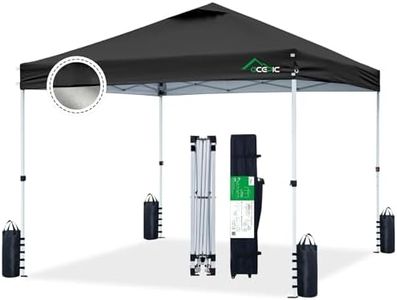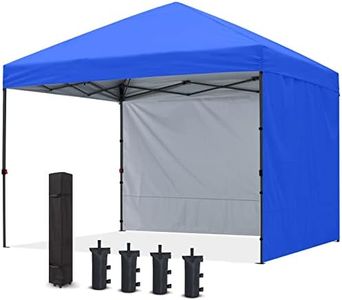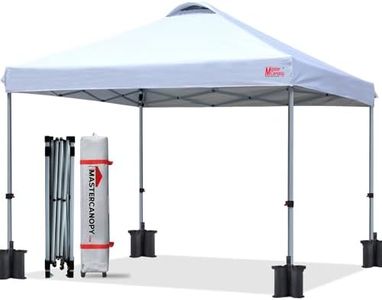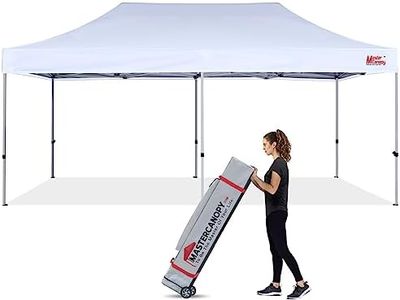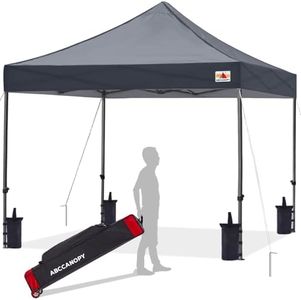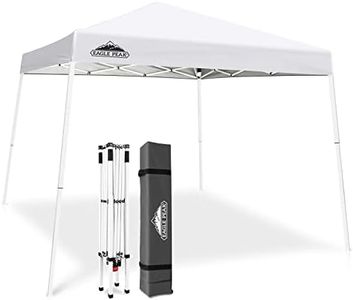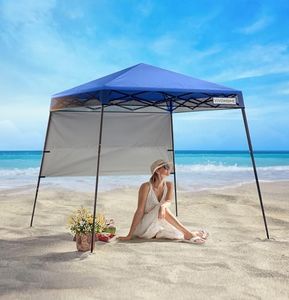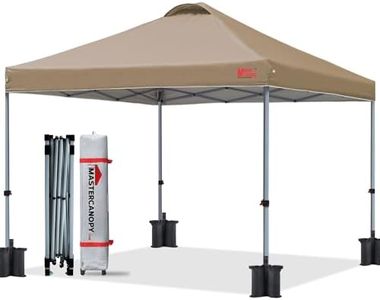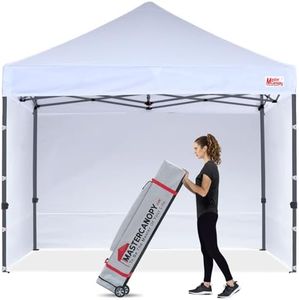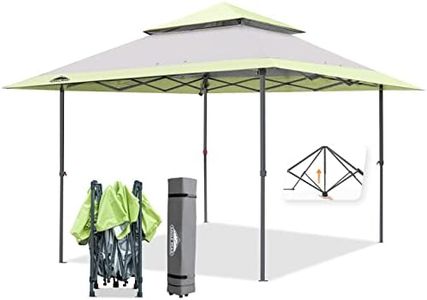We Use CookiesWe use cookies to enhance the security, performance,
functionality and for analytical and promotional activities. By continuing to browse this site you
are agreeing to our privacy policy
10 Best Pop Up Canopy Tents
From leading brands and best sellers available on the web.Recommended lists
Buying Guide for the Best Pop Up Canopy Tents
Choosing a pop-up canopy tent can make a big difference for your outdoor events, whether you’re planning a backyard party, a market stall, or a camping trip. The right tent will provide shelter from sun and rain, be easy to set up, and last through many uses. To find the best fit, it’s important to understand the main features and how they relate to your needs. Think about where and how often you’ll use the tent, how many people or items you need to cover, and how much effort you want to spend on setup and transport.SizeSize refers to the dimensions of the canopy when it’s set up, usually measured in feet (like 10x10 or 12x12). This is important because it determines how much space you’ll have underneath for people, tables, or equipment. Smaller tents (around 6x6 to 8x8 feet) are good for personal use or small groups, while medium sizes (10x10 to 12x12 feet) are popular for family gatherings or market stalls. Larger tents (over 12x12 feet) are best for big events or covering multiple tables. To pick the right size, consider how many people or items you need to shelter and the space available at your location.
Frame MaterialThe frame material is what gives the tent its structure and affects both strength and weight. Most pop-up canopies use steel or aluminum frames. Steel frames are heavier and generally more durable, making them good for windy conditions or frequent use, but they can be harder to carry. Aluminum frames are lighter and easier to transport, but may not be as sturdy in rough weather. If you plan to move your tent often or set it up alone, a lighter frame might be better. For more permanent or heavy-duty use, a steel frame could be the right choice.
Canopy FabricCanopy fabric is the material that makes up the roof and sometimes the sides of the tent. It’s important because it affects weather protection, durability, and ease of cleaning. Common materials include polyester and vinyl-coated fabrics. Thicker, coated fabrics offer better protection from rain and UV rays, while lighter fabrics are easier to handle but may not last as long. If you need strong sun or rain protection, look for a canopy with a high denier rating or special coatings. For occasional, fair-weather use, a lighter fabric may be sufficient.
Ease of SetupEase of setup describes how quickly and simply you can put up and take down the tent. Some canopies are designed for one-person setup with simple push-button systems, while others may require two or more people and more steps. If you’ll be setting up the tent alone or need to move it frequently, look for models that advertise quick or solo setup. For larger or more complex tents, be prepared to have help or spend more time on assembly.
PortabilityPortability is about how easy it is to transport and store the tent. This depends on the weight, whether it comes with a carrying bag, and how compact it is when folded. Lightweight tents with wheeled bags are easier to move, especially if you’ll be carrying them to parks, beaches, or markets. If you have limited storage space or need to fit the tent in a small car, check the packed dimensions before buying.
Weather ResistanceWeather resistance covers how well the tent stands up to sun, rain, and wind. Features like water-resistant or waterproof fabric, UV protection, and sturdy frames all contribute to this. Some tents also include sidewalls or anchor systems for extra protection. If you expect to use the tent in unpredictable weather, prioritize strong weather resistance. For mostly sunny, calm days, basic protection may be enough.
Adjustable HeightAdjustable height means you can change how tall the canopy stands, usually with telescoping legs. This is useful for fitting the tent into different spaces or adjusting for sun angle and headroom. If you need flexibility for different events or locations, look for a tent with multiple height settings. If you always use the tent in the same way, a fixed height may be fine.
